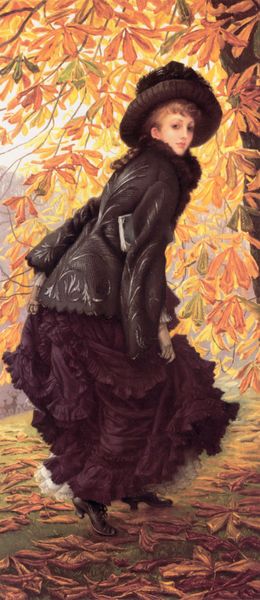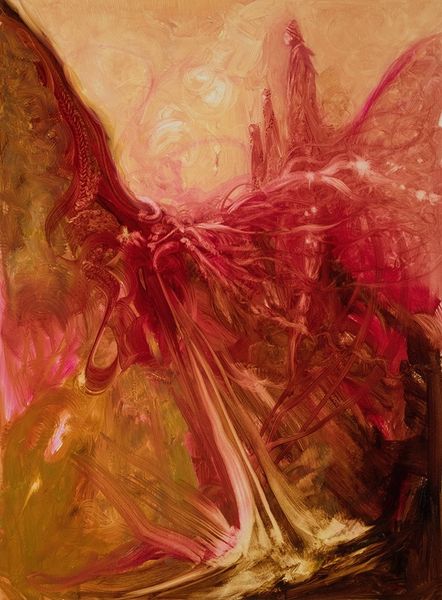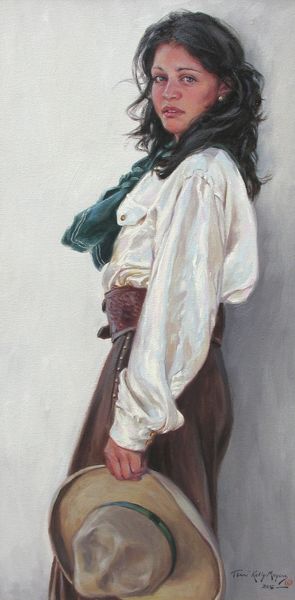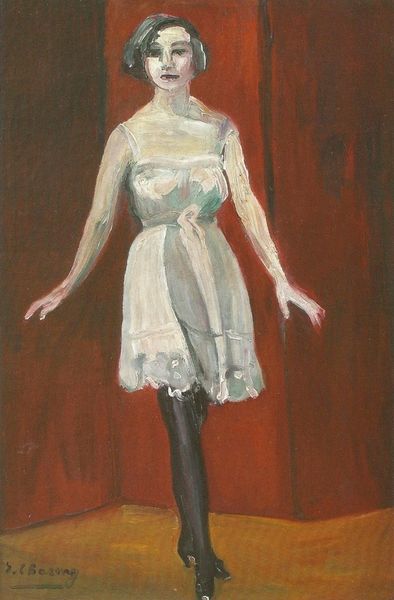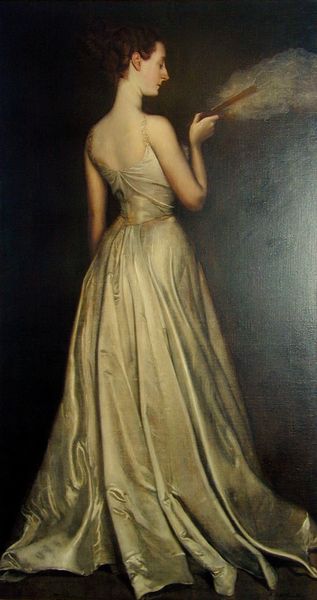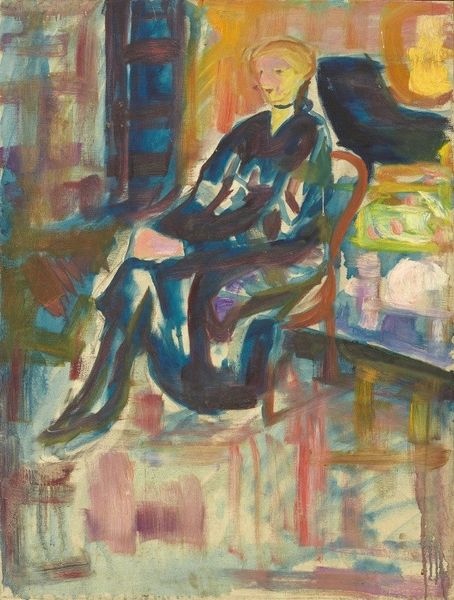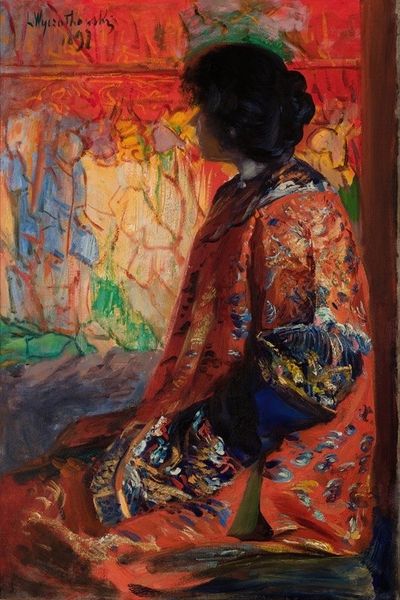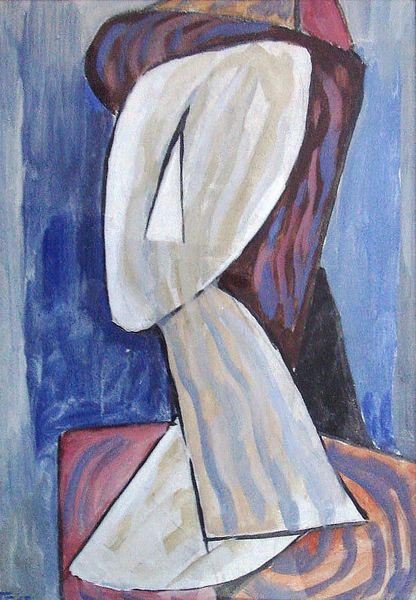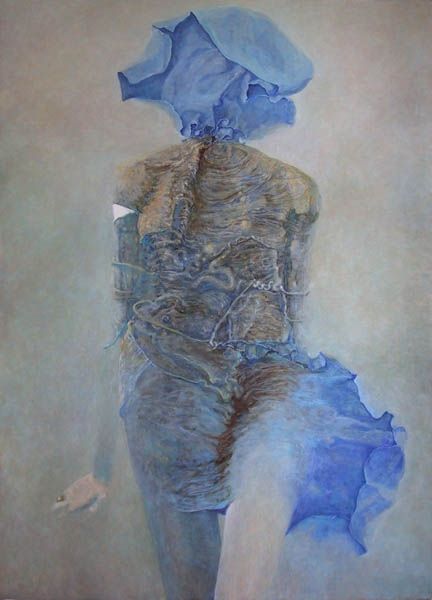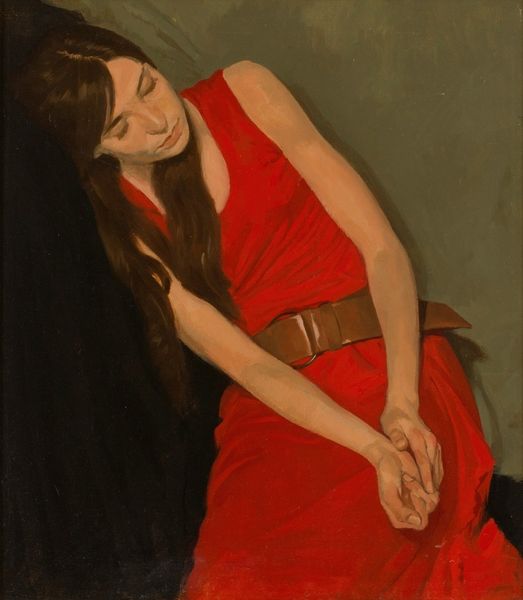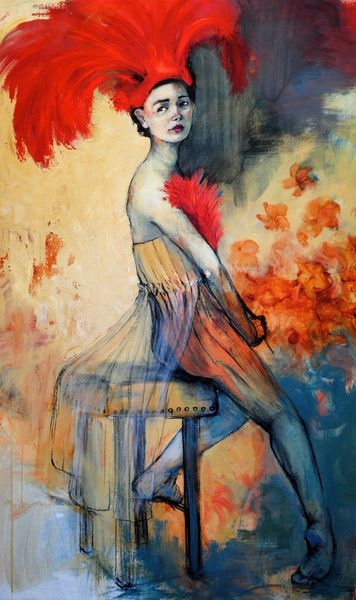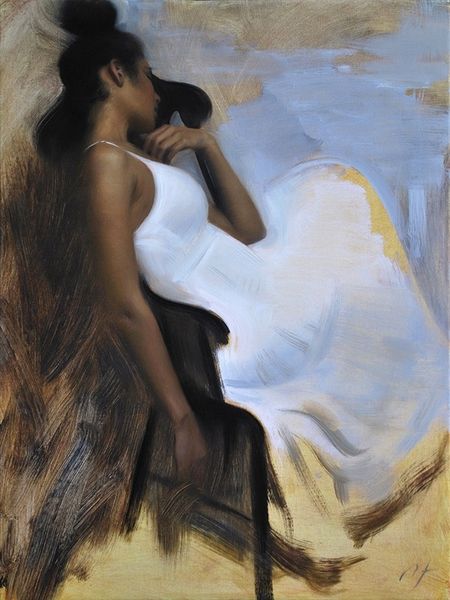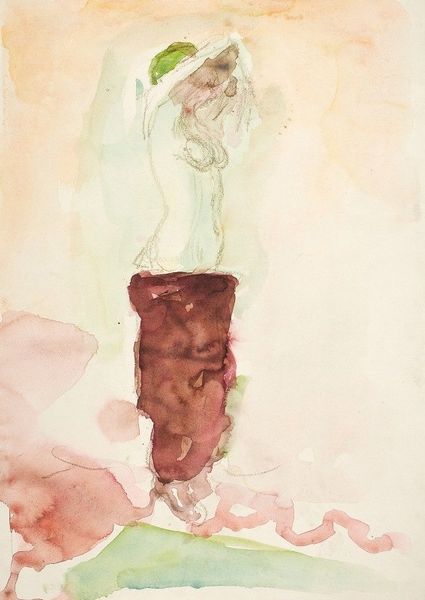
Copyright: Public Domain: Artvee
Curator: The work before us is titled "October", painted by James Tissot in 1877. It captures a stylishly dressed woman amidst falling autumn leaves. The artist worked “en plein air”, embracing the impressionistic style. Editor: My first impression is of a fleeting moment, a beautiful melancholic study of transience and reflection—both literally and figuratively. There is an unusual luminosity within the golden tones, making the surface shimmer. Curator: Absolutely, Tissot captures a specific vision of femininity shaped by the rigid societal norms of the Victorian era. What strikes me is how the painting showcases the intersection of fashion, leisure, and social identity for women of that period, all presented within the context of changing seasons. Editor: Observe how the cascading foliage frames her figure; this directs the viewer’s eye and emphasizes the patterns and colours of her dress. The artist has created a structured pictorial space. The contrasting textures of her attire are so brilliantly rendered: fur against the silk, which creates dynamic interest. Curator: It’s quite intriguing how Tissot uses fashion to communicate social status and the expectations placed upon women. The autumnal setting itself plays a role. It serves as a backdrop for observing the rituals of the wealthy classes during their leisure time. Note that, in the latter half of the 19th century, the middle classes could enjoy the outdoors without needing to be engaged in any specific duties like hunting, labouring in the fields, or exercising religious contemplation. Editor: I think we could also analyze the light itself here. Notice how it dances on the surfaces, breaking down form and volume. Tissot manages to capture the impression of light, not necessarily rendering everything perfectly realistically, but communicating his perception of that light in the scene. The dappled shade and the bright golden light really capture the feeling of that time of year. Curator: This work also brings to mind questions surrounding artistic patronage and market forces. The choice of subject, a fashionable woman, undoubtedly reflects the preferences of Tissot’s clientele. There’s a commercial calculation at play; his art must reflect his client's aesthetic preferences. Editor: It’s fascinating how that detailed realism in the garments interacts with the looser brushwork. There's a lovely tension between specificity and vagueness; what matters is how it looks as a whole. Curator: Reflecting on this, "October" offers a window into understanding social and cultural values, gender roles, and how visual representations played a crucial role in solidifying those societal norms. Editor: From my perspective, it captures the essence of a passing moment, beautifully composed and textured. The composition’s beauty lingers, and as a whole, the work embodies that autumn feeling, when the year's decline turns out to have beauty all its own.
Comments
No comments
Be the first to comment and join the conversation on the ultimate creative platform.
